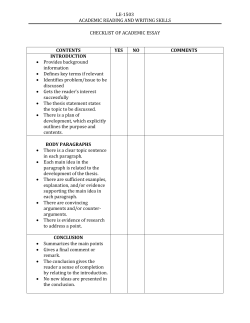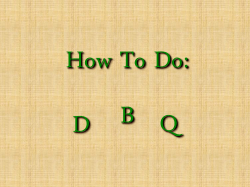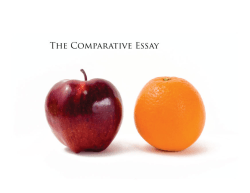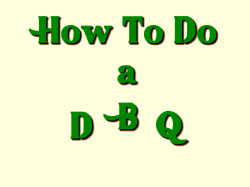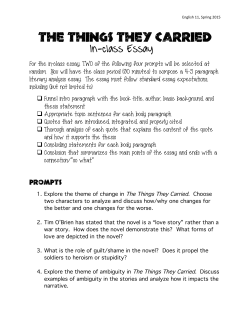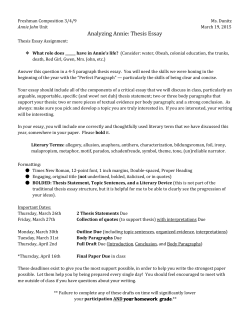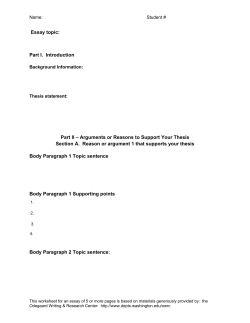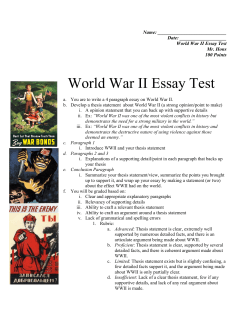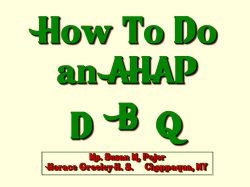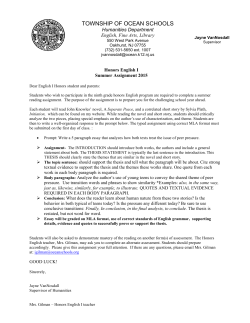
File
Instructions and Tips for the 5 Paragraph Essay I.) Intro Paragraph A.) Background information should be RELEVANT. If nothing pertinent congeals right away, that’s okay—move on to the thesis. It is perfectly acceptable for an essay to begin with just a thesis. B.) Potential ideas for hooks: 1.) Quote! J • If you can, try to keep this as “AP-ish” as possible (avoid newish pop songs, movies, etc.) – remember you’ve got old, nerdy people reading and grading your essays… they might not recognize modern classics such as “Uptown Funk” or Fast & Furious 7 2.) Link to an outside text 3.) Put a new spin or twist on something (cleverly mess with classic quote, etc.) 4.) Refute opposing viewpoint/cliché (“While some may say…”) 5.) Statistics 6.) Establish a controlling metaphor for your essay (“The institution of slavery in the U.S. was like an infected wound,” “the rising tide of revolution,” etc.) 7.) Rhetorical questions 8.) Historical context of the novel 9.) A link to modern times/the modern world 10.) Whatever you do, do NOT start with “Since the dawn of time…” L C.) Your thesis should more or less restate the prompt. 1.) It should be ARGUABLE. That the author of an article uses rhetorical devices is not debatable; that the author uses certain devices for certain reasons and to certain effects is debatable. 2.) It should be multi-part. Make it easy for yourself and lay out things (rhetorical devices, characters, events, scenes…) in multiples. Multiples of 3s work particularly well. Remember to address these things in your body paragraphs in the same order in which you list them in your thesis. II.) Body paragraphs A.) Begin each paragraph with a topic sentence (kind of like a mini-thesis). This way, there will be no surprises; your reader will know exactly where you’re going. B.) Include textual support. Verbatim quotes are nice; appropriate (paraphrased) examples work just as well. AVOID PLOT SUMMARY! C.) Analyze textual support with your own commentary. Consider a 1:3 ratio of text to analysis. D.) End each paragraph with a summary sentence that either relates back to thesis or transitions to your next idea/paragraph. This will emphasize your argument as well as preclude any other conclusions and make a nice, cohesive unit of each paragraph. III.) Conclusion A.) DON’T SUMMARIZE! B.) Put a new spin or twist on your thesis. You may also utilize one of the other possible (but unused) ideas/devices for your introduction… Miscellaneous • Brainstorm/Outline! • Let style take a backseat to content. • Use the present tense consistently. • Avoid using “first person” POV. • • • • Do not use contractions. Do not use slang or colloquialisms. Avoid the passive voice. Clichés are lame. Don’t use them.
© Copyright 2025
